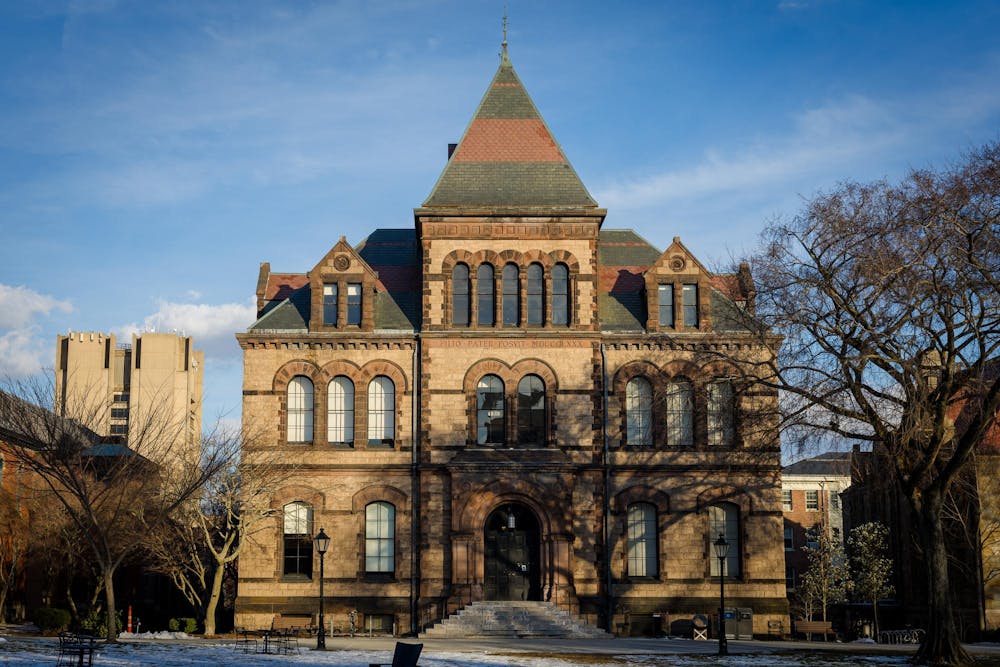Last academic year, Brown offered undergraduate students $3.2 million of federal work-study aid as part of institutional financial aid packages, according to Dean of Financial Aid Sean Ferns.
But for some students, understanding how the program works can be difficult.
At first, “the way that I understood federal work-study was as a scholarship you get for working on campus, in the sense that it’s money that’s just given to you,” said Daniel Brambila-Diaz ’27, a student with work-study financial aid. “It’s money that comes out of your paycheck that goes to pay for your tuition every year.”
But Brambila-Diaz soon realized that’s not quite how work-study operates.
Federal work-study was established in 1964 to help college students with financial need pay for their education through part-time employment. Work-study aid is not a stipend, but an amount of money that can be earned by working on campus.
At Brown, eligible students receive work-study offers of up to $2,950 per year. This academic year, 37% of undergraduate students on financial aid have federal work-study included in their aid offer, according to Ferns. The average work-study award for these students is $2,613.
These work-study offers count toward meeting students’ full demonstrated financial need, Ferns said. But students will only receive this money if they are employed in an on-campus job.
Wages from these jobs are not automatically put toward students’ tuition. Instead, students have to opt to use the money earned for educational purposes.
The offers also do not guarantee or mandate a campus job — students choose to find and apply to jobs on their own.
Jobs found through work-study are similar to other campus jobs, but wages for work-study jobs are partially funded by the federal government.
Federal funding from the Department of Education covered nearly $1.2 million of work-study student wages last academic year, Ferns said. The University supplemented these federal funds to pay Brown students with work-study aid a total of $1.6 million.
Brambila-Diaz, a campus tour guide and Meiklejohn peer advisor, recalled feeling uncertain about what federal work-study entailed as a first-year student.
“I was really confused at first, because coming in my freshman year, I didn’t already have a job lined up for me when I got here,” Brambila-Diaz said. “So I was like, ‘How is it possible that federal work-study is going to be put into my financial aid?’”
Regan Cavin ’27, an engineering tutor and teaching assistant, was hesitant about finding a work-study opportunity as a first-year.
“I didn’t really feel comfortable working until I was a sophomore because I just didn’t want my school, academics or grades to be impacted,” she said.
During her second year, Cavin started hunting for a job. “As tuition is rising, I need more money for different things and to be able to pay my tuition,” she said. Earlier this month, the Corporation, the University’s highest governing body, approved a 4.85% increase to undergraduate tuition and fees that will take effect July 1.
In addition to on-campus employment opportunities, the University also dedicates a portion of the federal funding to Off-Campus Federal Work-Study program, The Herald previously reported. These community service-based employment opportunities are administered by the Swearer Center for Public Service and are open to students eligible for work-study.
But not all students who want to work off-campus through the Swearer Center are selected. Out of 181 students who applied for OCFWS opportunities last fall, 110 received positions, according to Ashley Greene, director of the Swearer Center’s Community Partnership team. While the last few years have seen an increase in applicants, the number of available positions has remained constant, she added.
Brambila-Diaz said he was interested in the Swearer Center’s paid off-campus opportunities but was concerned about the challenges that come with working off-campus.
“I think the issue with it is the practicality,” he said. “One of them was at Rhode Island Free Clinic, and it is like a 20-minute bus ride that I don’t think I’d have time for,” he said.
Brambila-Diaz, Cavin and Daisy Martinez ’25 told The Herald that they would pursue other academic and professional opportunities on campus if they were not working to support themselves and fund their education.
“I need to financially provide for myself,” Martinez said. “I definitely think that if I didn’t have that barrier, I would have dedicated a lot more time to…getting more experience within the field that I’m interested in.”
Ethan Schenker is a university news editor covering staff and student labor. He is from Bethesda, MD, and plans to study International and Public Affairs and Economics. In his free time, he enjoys playing piano and clicking on New York Times notifications.
Emily Feil is a senior staff writer covering staff and student labor. She is a freshman from Long Beach, NY and plans to study economics and English. In her free time, she can be found watching bad TV and reading good books.





